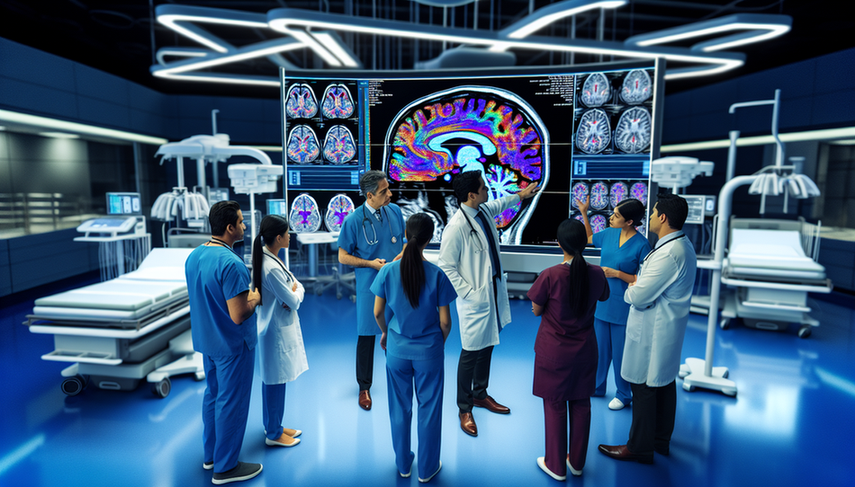Stroke Management with AI: Diagnostic Algorithms and Guided Thrombolysis for Immediate Neurological Care
The stroke is one of the leading causes of morbidity and mortality worldwide, and effective stroke management is crucial for improving patient outcomes. In recent years, artificial intelligence (AI) has emerged as a powerful tool in stroke management, particularly in the development of diagnostic algorithms and guided thrombolysis. These advancements promise to optimize immediate neurological care and personalize treatment for each patient.

Advancements in Stroke Diagnosis and Treatment with AI
The implementation of AI in stroke diagnosis has led to significant advancements in the early and accurate identification of patients who may benefit from reperfusion therapies. For instance, the use of machine learning algorithms to evaluate MRI images has improved the ability to identify patients within the time window for thrombolysis, even surpassing the accuracy of human readers in some cases.
Moreover, deep learning models have proven effective in predicting post-thrombolysis hemorrhagic transformation, allowing for better risk stratification and clinical decision-making. These models utilize clinical and imaging data to predict individual outcomes, representing a step towards precision medicine in stroke.
AI has also been integrated into stroke care systems, as seen in the use of automated decision support tools that facilitate patient selection for reperfusion therapies, improving the rate and timing of administration of these therapies in networked care systems.
Conclusions
The integration of artificial intelligence in stroke management is transforming the way this condition is diagnosed and treated. Diagnostic algorithms and guided thrombolysis powered by AI not only enhance the accuracy and speed of diagnosis but also personalize treatment, thereby optimizing outcomes for patients. As technology continues to advance, it is essential for healthcare professionals to stay updated on these innovations to improve immediate neurological care and long-term outcomes for stroke patients.
References
- [1] Advanced Machine Learning Models for Predicting Post-Thrombolysis Hemorrhagic Transformation in Acute Ischemic Stroke Patients: A Systematic Review and Meta-Analysis
- [2] Identification of successful cerebral reperfusions (mTICI ≥2b) using an artificial intelligence strategy
- [3] Improved Stroke Care in a Primary Stroke Centre Using AI-Decision Support
Created 20/1/2025
